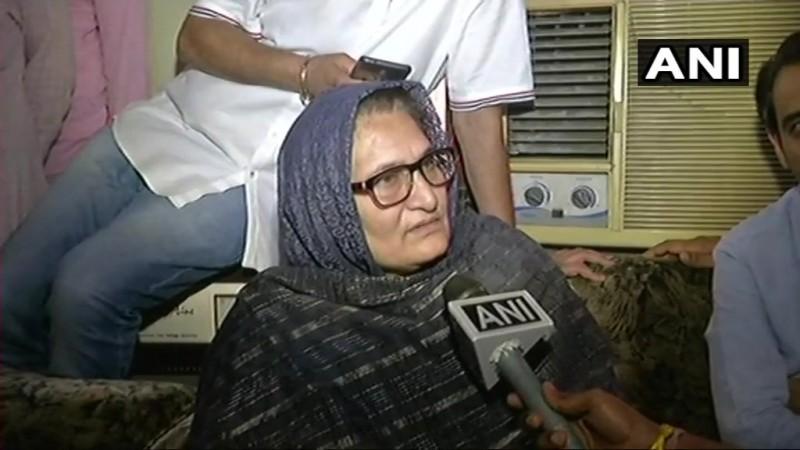
A united opposition has scripted a thumping victory in the by-election in the Kairana Lok Sabah seat in Uttar Pradesh. The victory of RLD's Tabassum Hasan against BJP's Mriganka Singh in Kairana on Thursday comes after the party's recent defeat in Gorakhpur and Phulpur bypolls.
This doesn't change the power balance in the Lok Sabha. But the result is indeed a straw in the wind. And it unhesitatingly suggests that BJP is vulnerable to a united assault by the opposition. The Narendra Modi-Amit Shah combine will have to pull out new tricks in the 2019 general elections to stay in power.
BJP will really have to sweat it out in LS 2019 to get anything close to 273 MPS. The aura of easy inability of the BJP in the Hindi heartland has dissipated with the victory of RLD candidate Tabassum Hasan, who was supported by the Samajwadi Party (SP), the Bahujan Samaj Party (BSP) and the Congress.
The United opposition has its romantic charm and Kairana is their first victory. Like all romantic ideas, it's vulnerable to a heartbreak and a breakdown. But if indeed the alliance stands until the 2019 elections, BJP has a serious problem on hand. Here's why:
The Bharatiya Janata Party won 71 out of the 80 seats in Uttar Pradesh as Modi magic swept through the north India, propelling the party to power with a stunning absolute majority on its own in 2014. In the splintered opposition, the SP got 6 seats, the Congress 2 and Mayawati's BSP got none. NDA ally Apna Dal got an additional 2 seats, pushing the ruling alliance's tally to 73 out of 80.
This was how the score sheet looked in 2014:
BJP -- 71
Apna Dal -- 2
SP -- 5
Congress -- 2
BSP ---- 0
RLD --- 0
In other words. the dramatic falling apart of the opposition helped BJP add a staggering 61 seats to its 2009 tally of 10 seats.
This is how the 2009 seat tally looked like:
BJP --- 10
SP --- 23
Congress-- 21
BSP ---- 20
RLD - 5
By plain, simple logic, this means that a grand opposition alliance, or a Mahagathbandhan, in Uttar Pradesh can significantly reduce the overall number of seats BJP can win in the 2019 Lok Sabha election. If the opposition can push BJP back to the 10 seats it had won in 2009, the ruling party's share of seats will reduce to 200. That would mean BJP won't be able to return to power in the absence of strong alliance partners.
![UP CM Yogi Adityanath visited the storm-hit places in Uttar Pradesh. [File photo] yogi adityanath](https://data1.ibtimes.co.in/en/full/687224/yogi-adityanath.jpg?h=450&l=50&t=40)
And that takes us to the other headache for BJP. The NDA alliance is no longer the strong monolith it was four years ago. None other than BJP President Amit Shah has said that the grand opposition alliance in Uttar Pradesh is a challenge to the party in 2019 elections.
In terms of seat share, a grand alliance of SP, BSP and the Congress can romp home with more than 60 seats. While this is only a statistical possibility, a look at the vote share of these three parties and the BJP will lighten up the picture further.
In 2014, BJP had a vote share of 42 percent in Uttar Pradesh. That's much less than the halfway mark, but with that share of votes the saffron party grabbed more than two thirds of the seats. The victim was Mayawati's BSP, which had got close to 20 percent of votes but did not win a single seat.
The combined vote share of the three-way alliance of SP-BSP-Congress in 2014 was 49.3 percent. If these parties arrive at a pre-poll alliance, the BJP will have to certainly look down the barrel.
However, BJP will definitely pin hopes on a speedy unravelling of the grand opposition alliance. It's a fact that stitching together a mahaghatbandhan and ensuring that it weathers the pulls and pressures is a task only next to impossible.
At the same time, even an incremental impetus the opposition parties gain in Yogi Adityanath's Uttar Pradesh will be crucial. That's because BJP will be dealing with mounting challenges elsewhere in the country as well. Assembly elections in the states of Rajasthan, Madhya Pradesh and Chhattisgarh that will take place later this year, and are expected to return less than favourable results for BJP.

















